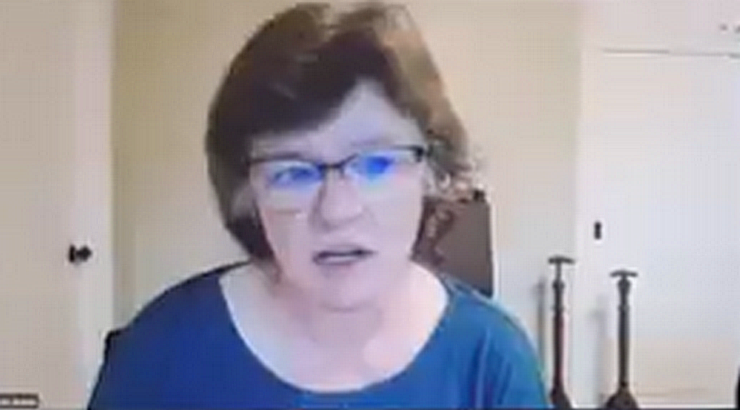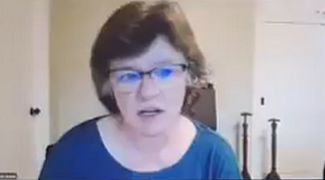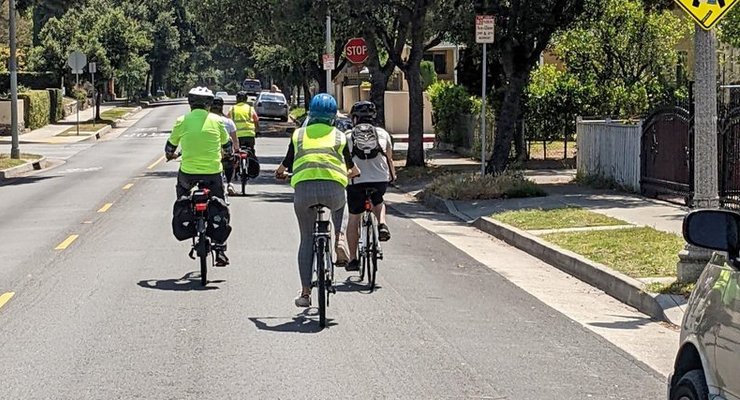
Dr. Lucy Jones during Sept. 12, 2024 press conference.
A magnitude 4.7 earthquake centered near Malibu jolted Southern California awake Thursday morning, prompting scientists at California Institute of Technology’s seismology laboratory in Pasadena to quickly convene and assess the temblor’s impact and significance.
The quake struck at 7:28 a.m., approximately 3.5 miles northwest of Malibu and 39 miles west of Pasadena, at a depth of about 7 miles, according to the United States Geological Survey.
Initially reported as a magnitude 5.1, it was quickly downgraded to 4.7. No injuries or significant damage were immediately reported. A series of smaller aftershocks rocked the area all Thursday.
Early Friday a magnitude 3.4 aftershock struck near Malibu. There were no reports of injuries or damage.
Lucy Jones, a well-known seismologist formerly with the U.S. Geological Survey ad currently a Caltech Research Associate, led the Thursday morning’s press conference where experts discussed the earthquake’s characteristics and implications for the region.
“This is a really good reminder that the quiet of the last couple of decades is not our long-term picture and we do need to be prepared,” Jones said.
The earthquake was widely felt across the Los Angeles area, including Pasadena, Burbank, Santa Clarita, Long Beach, Torrance, and Anaheim. Shaking was reported as far as San Bernardino and Riverside to the east, and Irvine to the south.
Susan Hough, a scientist with the United States Geological Survey who joined the Caltech, noted that the earthquake’s effects were less severe than its magnitude might suggest.
“The shaking that’s been reported has been felt out to a distance of about 60 miles or 100 kilometers,” Hough said. “Most of that information comes from the ‘Did You Feel It’ system.”
Hough also provided historical context, mentioning similar earthquakes near Malibu in 1979 and 1989.
Experts at the Pasadena lab emphasized that while the region has experienced more magnitude 4 earthquakes than average this year, it’s not yet statistically significant enough to indicate a fundamental change in seismic activity.
Jones addressed speculation about potential links between the earthquake and recent weather patterns, stating, “When it’s seven miles below the surface of the earth, the surface weather really does not make a difference.”
The seismologists encouraged Pasadena residents and others throughout the region to report their experiences through the United States Geological Survey “Did You Feel It” website, emphasizing that this data complements seismic network information and helps scientists better understand earthquake impacts.
Additional information was provided by Allen Husker, Research Professor of Geophysics at Caltech, during the press conference. Husker reported that approximately an hour after the initial quake, a magnitude 3.4 aftershock occurred very close to the main shock in both depth and location. This was the largest aftershock recorded at the time of the conference. He explained that this aftershock, being about one magnitude unit below the main 4.7 quake, is typical for the largest aftershock in most sequences.
“We should expect that there will be more magnitude threes today, so people local to the area can expect to feel a few more earthquakes,” Husker stated, describing this as typical aftershock behavior.
Husker also addressed the earthquake early warning system that alerted many residents via their phones. He emphasized that this is a new system, providing an opportunity for people to become familiar with it. “There’s a few seconds of warning when it’s a larger earthquake, we’ll expect people farther from the event. The event will be felt much further away. And so people farther away will get longer alert times,” Husker explained.
He encouraged West Coast residents to familiarize themselves with the system. For information, click here.
Caltech’s seismology laboratory continues to monitor aftershocks, which followed the main quake in decreasing magnitude, and analyze data from the event, providing crucial information to help Southern California communities, including Pasadena, prepare for future seismic activity.


















